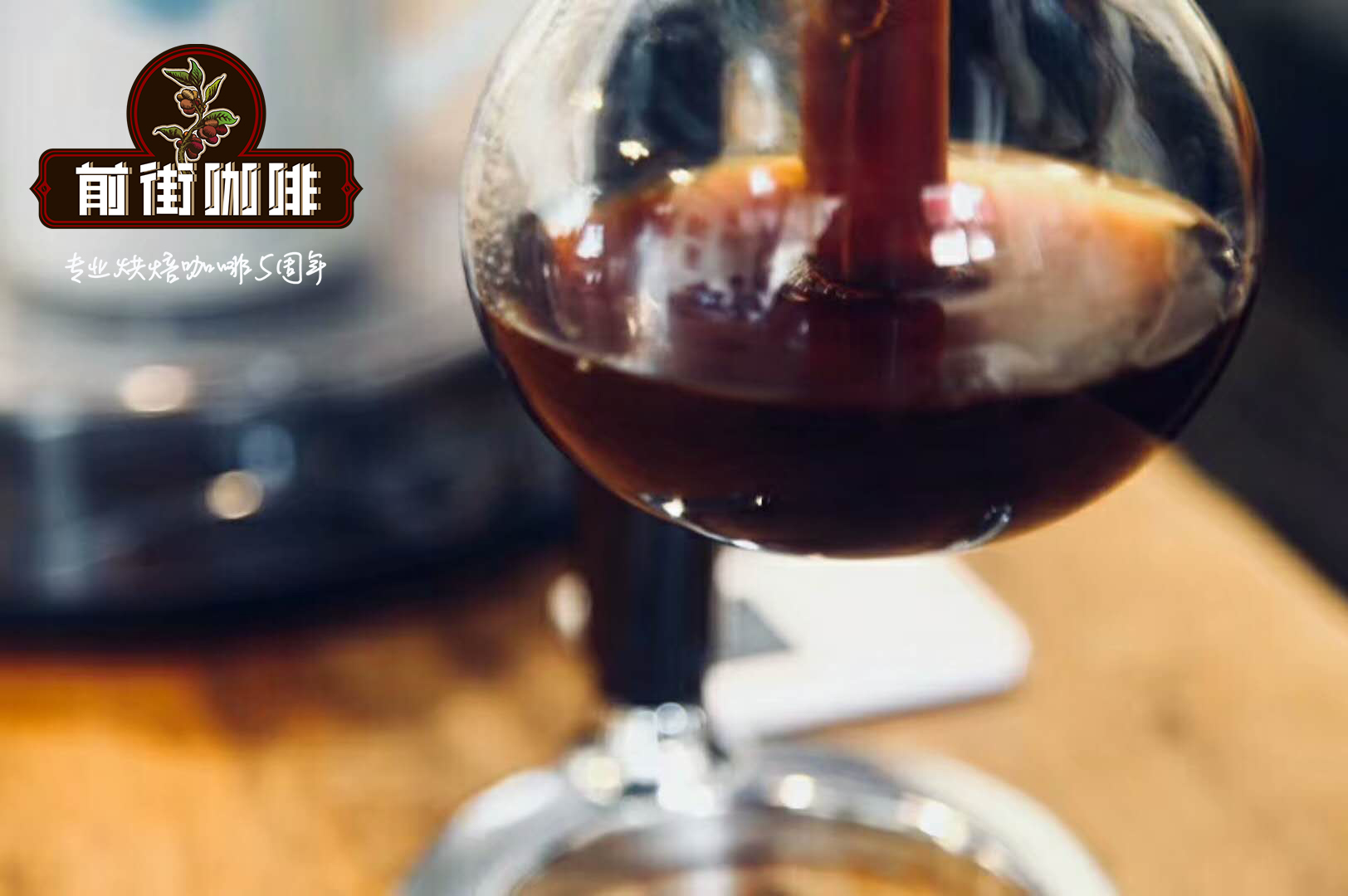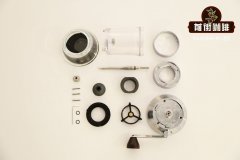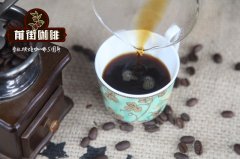Coffee brewing | what is the difference between siphon coffee and hand-brewed coffee?

What's the difference between siphon coffee and hand-brewed coffee?
Hand-brewed coffee uses filtration, while siphon coffee combines soaking and filtering, which can actually highlight the flavor, but now popular "boutique coffee" often uses filtering to brew coffee, so let's first introduce hand-brewed coffee.
The prototype of hand-brewed coffee was invented by an Englishman named BIGGIN, because when coffee was introduced to Britain, the Turkish soaking method was introduced to make coffee, and the British liked coffee but did not like the taste of coffee grounds, so this Mr. BIGGIN invented the prototype of velvet filtered coffee at the end of the 17th century, called BIGGIN, and then in the early 18th century. The French also invented a metal filter, but most people still like to use BIGGIN, so it was not until Europe used industrial methods to brew coffee by machine, this hand-brewed coffee utensils were used and carried forward by the Japanese.
Siphon coffee maker is most common in Taiwan and Japan. It is said that it was first invented by Scottish shipbuilder Robed Napier and appeared in Germany in 1830. Finally, it was continuously improved by France and Britain into the upper and lower parts. Under the action of heating and atmospheric pressure, heating makes the water go up (the water is heated and vaporized), and after the heat is turned off, the coffee is filtered down (the water steam cools but the condensation volume shrinks). The coffee bar, which is soaked and filtered, is so delicious that the maker looks like a researcher.
Material:
Since the development of hand-made coffee, it has been divided into two groups from the filter materials used. Flannel is used in the old school, but less is used at present. The new school uses disposable filter paper, and the two schools have their own advantages and disadvantages and supporters. Flannel has concerns about unsanitary and repetitive flavors, while paper filtration is quick and hygienic, but the Crema in the coffee is sucked away, and the flavor is obviously not as mellow as flannel.
The filter in the middle of the siphon coffee maker always uses flannel and has never seen any other substitute.
Size and amount of coffee:
Both requirements for coffee thickness and quantity are the same, according to the SCAA cup test standard will be too light, can drink a little more, I suggest that 250ml water use 25 grams of coffee beans, and the grinding scale at 3 is more appropriate.
Water temperature and brewing time:
The approximate time for hand-brewing coffee will be 2 minutes, 30 minutes and 45 seconds. There are still many coffee makers in Japan who like to brew more than 4 minutes, while the water temperature is about 90 degrees. If the water temperature is lower or rougher, the brewing time will be prolonged. The extraction time of the siphon coffee pot is at least 2 minutes shorter than that of the hand, and the extraction is usually completed in 45-50 seconds. Although the time is short, the water temperature is about 10 degrees higher than that of the hand, and boiling water above 100 degrees is almost used. so if the soaking time is too long, it will affect the flavor.
In addition, the hand flushing filtration method has a relatively large flavor change, and the different techniques, temperature and water flow rate will affect the flavor change; on the contrary, siphon has less flavor, and the adjustment space for coffee bean flavor is not as rich as that of hand flushing. As long as the production does not fail, it is almost easy to standardize.
Taste differences:
The hand is unstoppable, and the greatest charm of the hand is that it can drink a variety of other flavors of coffee, whether the fruit is sour or firm, rich and multi-layered, and the front, middle and aftertaste are very obvious. The coffee liquid extracted by siphon coffee is not just brewed. Due to the atmospheric effect of hot expansion and cold contraction, the coffee essence in coffee beans seems to be extracted, so although the siphon extraction time is short, it is very strong. Caffeine is also heavy.
From the traditional perception that most people drink coffee, I still prefer the bitter but gentle thickness of coffee to the stimulating bitterness of cracking, which siphon coffee can do, while hand-brewed coffee is full of flavor. However, I am afraid that most people can not accept that coffee with fruit acid or citric acid is coffee, especially in light roasting, there is still a long way to go for consumers to accept.
As for why "boutique coffee" is made by hand with filter paper at present? This is because foreigners like SCAA and CoE can only use filter paper to make a single cup of coffee. They know it but haven't touched the siphon, so it's what it is now. In fact, I think there is no certain standard for using filter paper or flannel or siphon or mocha pots because of their own preference for coffee taste, or which tools coffee cafes prefer to use to show fine coffee. now this is the trend of filter paper, and even an one-time earbag can also make good coffee.
This article is reproduced in the Coffee Review
Important Notice :
前街咖啡 FrontStreet Coffee has moved to new addredd:
FrontStreet Coffee Address: 315,Donghua East Road,GuangZhou
Tel:020 38364473
- Prev

How to choose the standard of cutter head replacement of coffee grinder the difference between flat knife and cone knife of coffee grinder
The bean grinder is one of the most important coffee equipment you have, whether you are a cafe owner or a coffee lover. Inferior machines can lead to uneven grinding size, which in turn leads to inconsistent extraction rates and cloudy cups. The use of a cutter grinder will greatly improve the quality of coffee. Because the cutter head is not ground by shredding but by pressure, compared with the blade grinder
- Next

Coffee popular science | will drinking coffee lead to osteoporosis? What is the effect of drinking coffee on the body?
Strong bones are the foundation of human health.
Related
- Beginners will see the "Coffee pull flower" guide!
- What is the difference between ice blog purified milk and ordinary milk coffee?
- Why is the Philippines the largest producer of crops in Liberia?
- For coffee extraction, should the fine powder be retained?
- How does extracted espresso fill pressed powder? How much strength does it take to press the powder?
- How to make jasmine cold extract coffee? Is the jasmine + latte good?
- Will this little toy really make the coffee taste better? How does Lily Drip affect coffee extraction?
- Will the action of slapping the filter cup also affect coffee extraction?
- What's the difference between powder-to-water ratio and powder-to-liquid ratio?
- What is the Ethiopian local species? What does it have to do with Heirloom native species?

